#nutritional value of garlic
Explore tagged Tumblr posts
Text
Unmasking the Potential: Exploring the Link Between Garlic and Health
https://self-care-tips.com/post-details/unmasking-the-potential-exploring-the-link-between-garlic-and-health

#garlic and health benefits#health benefits of garlic#link between garlic and health#garlic and disease prevention#potential benefits of garlic#garlic in diet#nutritional value of garlic#explore health benefits#garlic research and studies
0 notes
Text
"Zhongli, would you eat me if I were food?"
"Of course I would," your husband responds, a small smile on his face.
Your eyes widen, a pout now making itself known. "I thought you were going to say, No, I would never eat my beloved! What gives?"
Zhongli's smile grows. "I had initially thought to give such an answer, but I think trying new things would be rather lovely." He pulls you close as if he didn't just insinuate you would be an interesting new meal to sample.
"Well!" you huff, "I wouldn't be very tasty."
"I have tasted you many times and find you perfect for my palate," replies Zhongli nonchalantly, cuddling you, "so there is nothing to worry about."
Your face heats up; looking away, you stammer, "I - I wouldn't be a healthy option..?"
"Some meals can simply be enjoyed for their taste rather than their nutritional value." Zhongli beams, his smile a blend of mocking and loving. "So, I believe dinner is accounted for. I shall add salt, pepper, garlic and some vegetables and have myself a fine meal, hm?"
"No!" you protest, squirming, to which your lover only laughs and holds you tighter.
1K notes
·
View notes
Text
Fuck Canon Tiingilar
i hate the canon tiingilar recipe with my whole heart. Look at this (original source Galaxy's Edge cookbook). This is supposed to be "blisteringly spicy Mandalorian stew or casserole"? This is a mild chicken curry.

It sounds good, but it's not the rich, spicy, flavor-packed mandalorian stew of my dreams.
Let's start by breaking down the etymology of tiingilar.
Tiingilar is broken into 3 parts: Tiin, gi, and lar.
Tiin is an underived form of tiin'la, or coarse.
Gi is the word for fish.
Lar is a bit up in the air; it could be related to laar, for sing (which anyone who's seen someone bite into something spicier than they can handle can understand), or galar, for spill/pour (makes sense for stew), or even olar for "here", which I suppouse could be extrapolated to mean "whatever is here" for a stew which has flexible ingredients.
But the really important bits are the "tiin" and the "gi"! The first chunk of tiingilar means "coarse/rough fish(y)".
The other food word we have with "gi" in it from canon mando'a is "gihaal", (which, hilariously, breaks down into fish-breath), a pungent fishmeal. It's long lasting and stable which means its probably a staple ration food. It sounds like it'd put most people off at first, but given mandalorian tastes prioritize strong flavors (draluram), possibly including pungent flavors, and "richly nourishing" foods (yaiyai) it's probably a pretty common ingredient.
Guess what fishmeal is! A very high protein (typically 50-60%, but up to 70% for some varieties!), nutritionally dense, and coarsely textured! It's used in any cuisines; some is processed for human consumption but I cannot find any sources that use it in food except in research aiming to combat malnutrition (shout out to researchers at the Abeokuta University of Agriculture for being the best resource about fishmeal in food!). Although we can't know that gihaal would be the same as our version of fishmeal (which is normally processed from whole fish), I think that we can assume that mando'ade woudn't be skimping on the inclusion of bone, which include a lot of valuable nutrients, and would make it coarse.
So, gihaal is a pungent, likely coarse fishmeal that is a staple nutritional supplement in, at minimum, field cookery. It would make nutritionally-dense, protein packed, and strongly flavored base for tiingilar. Makes sense linguistically and practically for mandalorians to build their cooking around nutritionally valuable and shelf-stable rations.
Which brings me to the mandalorian values in food! Draluram (bright mouth: intense, bold flavors), heturam (spicy as in heat burning in the mouth), hetikleyc (spicy as in sinus burn), and yai'yai (richly nourishing, which I personally take to mean both nutritionally dense and satiating) are the 4 canon words that express the priorities in mandalorian cuisine.
These values fit in with the inclusion of gihaal as a base for tiingilar, adding yai'yai if not draluram, but where's my spice? Where's my layers of spice, the sharp sinus burn that makes your eyes water and the creeping warmth that leaves you panting and the bright heat and the numbing and tingling sensation at your lips?
Definitely not in that yellow curry recipe.
The inclusion of ginger and cinnamon (from garam masala) are both nice, but think bigger and broader! Obviously, we don't have mandalorian herbs, but add spice with chilies, cayenne, ginger, horseradish, mustard seeds, sichuan pepper! Bring out warming spices like cinnamon, nutmeg, cloves, star anise! Highlight the different elements of spice and warmth and flavor with enthusiasm and delight!
As for draluram, I think the pungent flavor of fish is a nice, bold addition to something for a unique flavor, but let's not forget other players. Aliums like garlic and onions are always lovely, but what about citrus? If mandalorians have behot, what's stopping you from adding in citrus juice or peel or some kaffir lime leaves? What about strong bitter flavors from vegetables you choose, like mustard greens or kale, or the rich savory taste of browned meats if you want more protein in your dish?
Yai'yai, we have a good base of protein and fat and nutritional content from the fishmeal, but why not build it out? Add sugar, both to balance flavors and because energy is energy and mandalorians certainly like their sweets. Fats and oils, other meats and proteins, vegetables and carbs. Add nuts, peanut butter, sesame for added bulk and another element of flavour. I want to see an end product that sticks to your ribs, that makes me skip seconds on not because I don't want more, but because I'm full on one serving.
Back to the etymology. Mild chicken curry is not tiin, nor does it have gi. It's fairly yai'yai, got decent draluram, negligible heturam, and no hetikleyc.
Tiingilar with a gihaal base (in irl cooking, any kind of fish base) and heavier seasoning to add multiple kinds of heat would fit all of those categories so much better.
So I guess in the end, I'm saying I don't have an idea of tiingilar as any one recipe, but tiingilar as a general dish that leans into mandalorian food culture and the literal meaning of the word. Maybe it's little gritty and somewhat fishy, but it's a rich and spicy and flavorful meal you can make with whatever on hand as long as you have a handful of staples.
Sources:
Adegoke, Bakare & Adeola, Abiodun & Otesile, Ibijoke & Adewale, Obadina & Afolabi, Wasiu & Adegunwa, Mojisola & Akerele, Rachael & Bamgbose, Olaoluwa & Alamu, Emmanuel. (2020). Nutritional, Texture, and Sensory Properties of composite biscuits produced from breadfruit and wheat flours enriched with edible fish meal. Food Science & Nutrition. 8. 1-21. 10.1002/fsn3.1919.
https://en.wikipedia.org/wiki/Fish_meal
https://mandocreator.com/tools/dictionary/index.html# for mando'a translations and definitions
https://www.reddit.com/r/Mandalorian/comments/mp1x7o/recipe_for_tiingilar_medium_heat_add_garlic/ for the recipe
#mandalorian culture#mandalorian cooking#original speculation#mando'ade#food#cooking#mando'a linguistics#star wars meta#FUCK that tiingilar recipe. i mean it looks fine but i looked it up and was immediately furious thats NOT tiingilar#not even chili flakes..... whyd they let people who dont like spicy write the mandalorian recipes
95 notes
·
View notes
Note
Wait I'm actually lowkey really interested in the whole vampire thing and like how it works and stuff in your creature AU!! Could you explain please? /nf :3
hopefully you mean the biology and society around vampires so i dont look stupid... but yeah.
so in order to be turned, one has to be bit, then consume/come in contact with the sires blood, then die and boom you wake up a vampire! very important fact of this universe is that creatures and humans have been assimilated for centuries atp, so society has been built around that. humans and creatures dont attack eachother, and theres laws in place to accomodate all the different species that are part of the world. so vampires dont need human blood to survive since there are whole shops, restaurants, cafes and bars that base their products on animal blood/synthetic blood, cuz lets be honest plain blood would get pretty boring fast. vampires dont take any nutritional values from human food but can still eat it, even tho it does taste slightly different to them. for that reason drinking from humans is looked down on as animalistic and crude, and without the humans consent its plain illegal. ofc there are humans who are into being a 'drink' and theres communities and clubs in place for that sort of a thing. theres also humans who want to get turned and can do so after a psych and medical evaluation and a bunch of legal paperwork for both the human and the vampire. but again turning someone without consent and agreements is a crime. after turning the vampires body stays in roughly the same state as at the time of death (fun fact, thats why gee is colder and paler than most vampires, cuz he bled out so at the time of death his body was almost bloodless). it kinda freezes, thats why thwy dont have pulses but if yoy cut them they still bleed. they also have wacky fast healing which is great for small injuries but kinda sucks for bigger ones (again thats where gees chronic neck pains come from. the skin over his bite wound scarred very fast but his muscles and nerves didnt catch up so theyre all messed up resulting in frequent pains yowch). the only thing i could not get a ligical reason for is vamp gee aging but hey its my universe so behold the sciency medical aging pill/treatment engenereed for vamps wjo want to age along with their loved ones! the aging is still a bit slower than the regular kind but its something.
silly facts include twilight and other 2000s' sexy vampire movies being the unhealthy vampire beauty standard that some of them hate and are working to abolish. makeup companies are selling sparkly lotions for that skin of a killer look. also yes they get irritated by garlic but its more like an allergy. also my vamoires have two sets of fangs. and more batlike ears. and nocturnal eyes so sunglasses are on high demand. their skin is sensitive to sun but doesnt exactly burn, more like very potent to sunburn. and theyre nocturnal but just like humans, they can have fucked up sleep scheduels and kinda train themselves to function in the day, altough most dont do it. vampires gather in clans which are usually a few families or completely non blood related ppl froming a tight community. theres some slight differences between turned and born vampires and there are vampire purists who only accept born vampires as real ones. theres also some more conservative humans who dont like turned vampires for abandoning their humanity.
i think thats most of the stuff that matters but feel free to ask abt anything bcs im serious when i say i put an unnecessary amount kf tought into the worldbuilding of this thing lmao
53 notes
·
View notes
Text
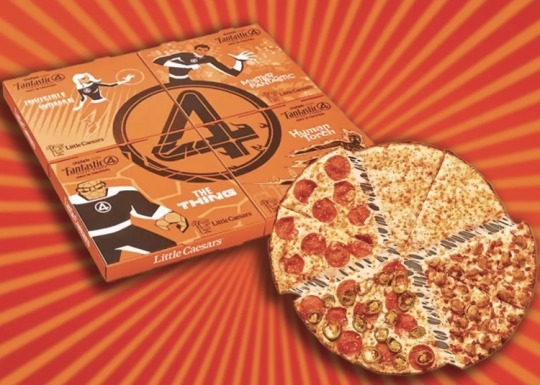
Welcome to Episode 2 of the Fantastic Four's interesting relationship with Tie-In Food Products. Last time we talked about Denny's bacon-filled Thing Burger, but today we're talking about a not as offensive offering: The Little Ceasar's Fantastic 4 in 1.
As you can see from the picture, The Fantastic 4 in 1 is a pizza split into sections that, hypothetically, represent each member of the team:
- Plain Cheese
- Pepperoni
- Pepperoni and Jalopeno
- Italian Sausage and Bacon
It's pretty clear which sections are meant to represent which member: The plain cheese's lack of toppings calls to mind Sue Storm's invisibility, The spicy jalapeño peppers are a clear reference to Johnny's ability to flame on, and the meat lover's rocky texture and hardy protein are a clear allusion to Benjamin's physicality. By process of elimination, Reed is the pepperoni.
Those of you who know my previous rant about the Thing Burger will know that using pork foods to represent Ben Grimm demonstrates a complete disregard for his jewish identity, however the beauty of this pizza is that the topping-less side of the pie is an acceptable alternative for the blue-eyed idol o' millions.
Nonetheless, I feel it is my responsibility as an autistic Fantastic Four fan to fix this pizza to be more accurate to the characters and provide better variety to the meal.
Let's start with Reed. Reed's stretching powers lend themselves very well to pizza. All you have to do is use a nice gooey cheese with a high tolerance for stretching to get those satisfying tendrils of cheese. Perhaps his section of the pie is a plain double cheese, I imagine texture is a concern for his autistic ass, hence why I neglected any toppings which might prove to be too much, but adding pepperoni wouldn't be a huge deal if you wanted to add it.
Now because Reed's section is plain, Sue needs a new gimmick. One thing I don't like about the Fantastic 4 in 1 is that it doesn't have anything for veggie lovers, which is something I intend to fix with Sue. She might have something like spinach, tomato, feta cheese, maybe even olives. I get the impression that Sue needs to convince herself that what she's eating still has some nutritional value, which is why she's more or less eating salad, an airy and light food, on a pizza.
Johnny is where the meat lover toppings live. Spicy italian sausage, pepperoni, smoked bacon, maybe even tangy buffallo sauce. He's here for a good time and treats his food like a lively party. The use of spice, tang, and the vibrant liquid orange of the buffallo sauce are meant to showcase his fiery abilities.
Ben is tricky, though pizza doesn't necessarily require cheese, it is a defining and unifying ingredient throughout this particular pizza pie, so it's something I want to keep. Thankfully, a recent issue of Fantastic Four confirms that Ben doesn't have much of an issue combining dairy and meat, so adding a beef topping to give his slice protein and a rocky texture is on the table. I've actually seen some pizzas use pastrami slices which would be a fun nod to his roots. I've also seen Salmon used on some kosher pizzas but I think that's taking things a little too far into esoteric territory. Ben is an uncomplicated guy, he wouldn't want to eat Avant-Garde pizza. Keep it simple and hardy (and with a ton of garlic) and he'll be happy.
Despite my pizza fanfiction, I do think the Fantastic 4 in 1 works much better as a representation of the team than Denny's individual meals. Pizza is a food designed to be shared, so splitting the pie into four sections that unify to create a full pizza just feels... correct for this group. They get to be individuals while still serving the whole.
Pizza Pizza.
9 notes
·
View notes
Text
Let's talk about Umbratras Part 3/?
Continuing with the line of posts (part 1 and part 2 here) about this species until there is enough lore to start the Umbratra AU the yandere Batfamily x Umbratra reader (either batmom or batsis), in this part we will explain very briefly (because it is not that important actually) how the Umbratras came to Earth and other curiosities of this species and this time I will do this in questions and answers format, to add more variety
So how did the Umbratras end up on Earth?
Although they were already living on a planet that was about to self-destruct (remember, Tenebrae Prime was an extremely old planet) they had no way to escape from the planet and its impending end, (sure, they had magic, but not advanced knowledge of what to do with all that power and potential they had), they left their home planet thanks to "outside help"
Which basically means that a more technologically advanced alien species came to Tenebrae Prime and took the few resources left on the planet (the Umbratras were also considered resources); which means that this species was forcibly removed from its home planet by a superior alien species of conquistadors (but talking about them is a topic for another post)
These aliens initially tried to use the umbratras as food, but when they saw that they were more valuable as for labor than as food (the truth is that in the end they were not completely convinced by the "flavor") and thanks to the umbratras' ability to imitate, over the millennia, they made a name for themselves in the new alien society to which they belonged until they were finally seen as one of them instead of second-class citizens or slaves.
So over time the umbratras and the other alien species went and looked for other planets with resources either to conquer, colonize or control and that last thing is the reason why the umbratras are on Earth
Thanks to their mimicry abilities and high adaptability, they were tasked with patiently beginning to take control of planet Earth and its most intelligent species (humans) so the Umbratra throughout the history of humanity have infiltrated all circles of power all over the world to control humanity (insert any conspiracy theory here, just say an Umbratra did it and in this AU it might be true)
What do umbratras taste like?
Literally nothing, that's why it's not fun to eat them
Why are they called vampires?
That's the name that humans gave them, but they prefer the name that the Kryptonians gave them and that the other alien species later told them that was what they were called (they like Umbratra better because it sounds more mystical)
Why do they like the gothic style?
That was the fashion they imposed when they already had enough control over human tendencies, for them that is the coolest thing that exists (it is not a phase, it is a lifestyle)
Is it true that garlic is harmful to them?
No, but they don't like the smell of garlic and if possible they will try to get away from the source of the smell, even so they can eat food with garlic as long as they don't smell it
Can they eat human food?
Yes, although for pure umbratras human food has no nutritional value and they only eat it to keep up appearances, but in the case of umbratra-human hybrids, human food can feed them but does not increase their magical power
Are they afraid of crosses?
No, but it is something they invented and pretended they were afraid of in order to make humans feel that they had a way to defend themselves from them, the same with holy water or items
Why were they not reflected in mirrors?
This is a misunderstanding, in reality, umbratras are not reflected in silver, in ancient times mirrors were made of silver and it was for this reason that there was a time when it was easier to detect an umbratra/vampire, using mirrors
Why do they drink human blood?
Human blood is the closest thing, not to say that it is exactly the same as the liquid that the Sanguivium flowers produce and that was the main and only source of food for the Umbratras when they inhabited their home planet
Can they only transform into bats?
No, although this animal transformation is their signature transformation (it is literally the first animal transformation they used when they came to Earth) as long as they drink the blood or consume the animal they wish to transform into, they will take its form, although the color of the animal will coordinate with the hair color they have chosen for their human form
Why do they sleep in coffins?
At first, when they were adapting, they used cemeteries or caves as homes to go unnoticed, they would hide in coffins and pretend to be dead in their resting graves (also in cases where they needed to take naps for decades, they would pretend to die and be buried during their resting periods). In the end, it became something cultural for them and they continued doing it (plus it matched the gothic style they created and like so much)
Do they need oxygen or to breathe?
No, umbratras don't even have lungs and some of their hybrids don't need to breathe either, but they pretend to do so
I think that's all for now, see you in the next part or if you have more questions and curiosities I will make another post with this style to solve them
#shady talks#yandere posts#batman#justice league#yandere batboys#yandere batfam#yandere batfamily#yandere batfam x reader#yandere batman#yandere superfam#yandere superman#yandere superhero#yandere justice league#batfam x reader#platonic yandere batfam#batfam#yandere clark kent#kripton#yandere super#Umbratras#alien oc#platonic yandere superfam
32 notes
·
View notes
Text
The King of Mushrooms: A Nutritional Powerhouse

In the realm of functional foods, mushrooms have emerged as a nutritional powerhouse, offering a plethora of health benefits. Among these, the King Oyster mushroom, scientifically known as Pleurotus eryngii, stands tall as a culinary delight and a nutritional champion. Let's delve into the nutritional profile of this extraordinary fungus.
A Nutritional Breakdown
King Oyster mushrooms boast a nutritional profile that rivals many conventional protein sources. Here's a breakdown of their key nutrients:
Protein: These mushrooms are a fantastic source of plant-based protein, making them an excellent choice for vegetarians and vegans.
Fiber: Rich in dietary fiber, King Oysters promote digestive health and satiety.
Vitamins and Minerals: They are packed with essential vitamins and minerals, including B vitamins, potassium, phosphorus, and selenium.
Low in Calories: Despite their nutritional density, King Oysters are low in calories, making them a guilt-free addition to your diet.
Health Benefits Beyond Nutrition
The nutritional prowess of King Oyster mushrooms extends beyond their basic nutrient profile. Here are some of the remarkable health benefits associated with these fungi:
Immune Boost: The beta-glucans present in King Oysters have been shown to stimulate the immune system, enhancing the body's defense mechanisms.
Antioxidant Power: These mushrooms are rich in antioxidants, which help combat oxidative stress and protect cells from damage.
Anti-inflammatory Properties: Certain compounds in King Oysters exhibit anti-inflammatory effects, reducing inflammation and promoting overall well-being.
Blood Sugar Regulation: Studies suggest that King Oysters may help regulate blood sugar levels, making them beneficial for individuals with diabetes.
Heart Health: The fiber, potassium, and antioxidants in these mushrooms contribute to heart health by lowering cholesterol levels and reducing the risk of heart disease.
Incorporating King Oyster Mushrooms into Your Diet
King Oyster mushrooms are incredibly versatile and can be incorporated into various dishes. Here are a few ideas:
Sautéed: Sauté them with garlic, olive oil, and herbs for a quick and flavorful side dish.
Grilled: Grill them to perfection, adding a smoky flavor that complements their meaty texture.
Steamed: Steaming preserves their delicate flavor and nutritional value.
Soups and Stews: Add them to soups and stews for a hearty and nutritious meal.
Pasta Dishes: Incorporate them into pasta dishes for a unique and satisfying flavor.
Conclusion
King Oyster mushrooms are a culinary treasure and a nutritional powerhouse. Their unique combination of nutrients and potential health benefits makes them a valuable addition to a balanced diet. So, the next time you're planning your meals, consider adding these royal fungi to your plate. Your taste buds and your body will thank you!
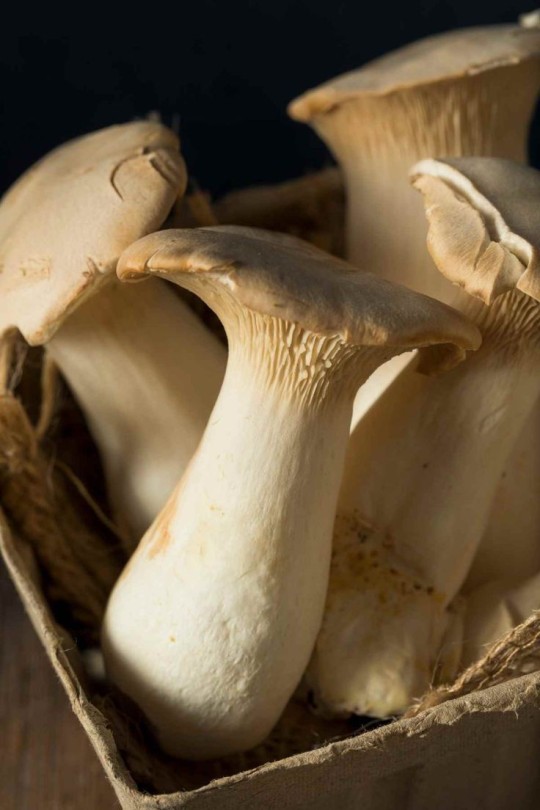
13 notes
·
View notes
Text
Okay so I’ve mentioned before that I’m rewriting the Twilight Saga. One of the things I’m completely changing is the traits of the Vampire species. I’m gonna list everything I’m gonna change below, and I want y’all to give me your thoughts.
Vampires and Blood:
Like in the original series, human blood holds far more nutritional value than animal blood. The main difference is: the more blood they drink, the more alive they seem. Their bodies will start to grow warm, their cheeks will regain color. If they manage to drink enough, their hearts will start to beat very slowly.
Vampires and the Sun:
There’s no sparkling. What the hell was that even about? However, the sun doesn’t immediately turn them to dust, either. Basically, being in the sun will quickly dry out all the blood a vampire may have in their veins. The longer they stay in the sun, the more dead they seem. It’s practically the exact opposite effect from consuming blood. In addition, a vampire will start to have symptoms relating to heat stroke, until they eventually die.
Vampires and Garlic:
Vampires do, in fact, have an aversion to garlic! However, instead of garlic cloves, its garlic flowers. Again, not an instant death sentence, but very uncomfortable. The scent that garlic flowers give off will give vampires a burning sensation in their nose, mouth, eyes, and lungs. The pain is severe enough to make a newborn vampire abandon a hunt.
Vampires and Mirrors/Pictures:
The myth that vampires couldn’t be seen in mirrors or pictures was once true. This is because mirrors and lenses used to be backed with silver, which was considered a “pure” metal. However, as this is no longer the case, vampires can clearly be seen in mirrors and pictures.
Vampires and Sleep:
Vampires are able to sleep, but it gives them no sense of rest or rejuvenation. It’s much like breathing in that sense. Many vampires choose to sleep to pass the time, or for comfort. However, just as many vampires choose not to sleep at all.
Vampires and Invitations:
Like in many old myths, vampires cannot enter a home without being invited inside. Instead of any physical barriers, though, it’s more of a psychological aversion. For some reason, it’s in a vampire’s instinct not to enter without an invitation. If a person were to say, “you are always welcome here”, they would be able to enter any time. I’ve done this for the sole reason of avoiding the stalker plot line.
Okay tell me what you guys think. I might update this later if I remember something, or find something else I’d like to change.
#twilight saga#twilight#rewriting twilight#rewrite#vampire#mythical creatures#mythology and folklore#twilight renaissance#twilight if it was good#isabella swan#carlisle cullen#esme cullen#edward cullen#rosalie hale#rosalie cullen#emmett cullen#alice cullen#jasper hale#jasper cullen
46 notes
·
View notes
Text
Gochujang Noodles Recipe: Spicy Creamy Delight
Hey friends, let’s cook a fiery gochujang noodles recipe for our recipespix.com community! This spicy gochujang noodles dish blends Korean gochujang paste with creamy sauce for a bold meal. It serves 4 and takes 25 minutes.
Each bowl has 400 calories, packed with flavor. I’ve used stencils to sprinkle sesame seeds in fun shapes. Last weekend, my family loved these creamy gochujang noodles — a total hit! I’ve added tips to perfect this gochujang noodles nyt dish. Let’s share this gochujang noodles recipe and make foodies happy!
Spinach Cacao Smoothie
Banana Blueberry Kale Smoothie
Cobb Salad Wendys
Wendy’s salad
Edamame Chicken Salad
Honey Garlic Chicken Stir Fry
What Is a Gochujang Noodles Recipe?
A gochujang noodles recipe is a spicy Korean dish with noodles tossed in a fiery gochujang sauce. This spicy gochujang noodles dish is creamy, bold, and perfect for quick meals.
The creamy gochujang noodles mix sweet, spicy, & savory flavors, loved by all. Easy to make, this gochujang noodles nyt recipe is great for dinner. Try these gochujang noodles for a fun, flavorful kick!
How to Make a Gochujang Noodles Recipe?
Making a gochujang noodles recipe is super easy, friends! This spicy gochujang noodles dish serves 4 and takes 25 minutes. Grab noodles, gochujang paste, cream, garlic, and green onions, plus a pot, pan, and stencils for sesame seed designs.
Cook noodles, make a creamy gochujang sauce with soy sauce and honey, then toss everything together. Add veggies for crunch and use stencils for a fun garnish.
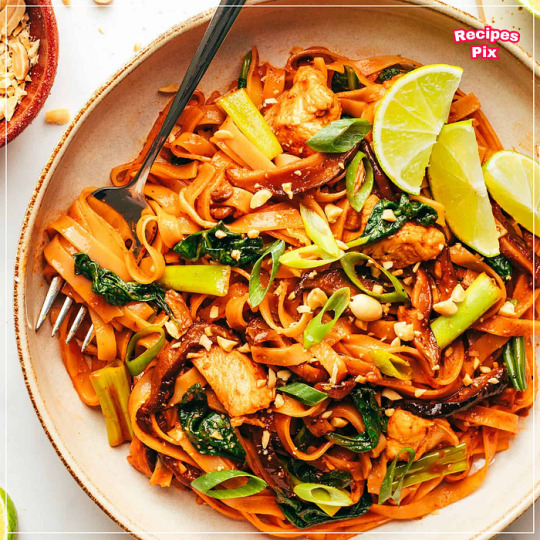
NYT Sheet Pan Gnocchi
Butternut Squash Fries Air Fryer
Cauliflower in Air Fryer
Chocolate and Zucchini Muffins
Banana and Oat Cookie
Peach Mojito Recipe
Recipe Details
Here’s a vertical table with all the details you need to make this gochujang noodles recipe, friends — now with fun icons on the left!
DetailInformation
Servings4 servings
Prep Time10 minutes
Cook Time15 minutes
Total Time25 minutes
CategoryMain Dish, Dinner
CuisineKorean-inspired
DifficultyEasy
EquipmentLarge pot, skillet, knife, stencils
Nutrition Facts (Per Serving, Approximate)
Here’s the nutrition breakdown for each bowl of gochujang noodles recipe, friends!
Calories: 400 kcal
Protein: 10g
Carbohydrates: 55g
Fiber: 2g
Sugars: 8g (from honey and gochujang)
Fat: 16g (from cream and sesame oil)
Sodium: 800mg (from soy sauce and gochujang)
Vitamin A: 10% of daily value (from carrots)
Vitamin C: 8% of daily value (from green onions)
Ingredients for Gochujang Noodles Recipe
Here’s everything you’ll need to make this gochujang noodles recipe, friends — now in a neat vertical table!
IngredientQuantityUdon or ramen noodles8 oz (dry)Gochujang paste2 tbspHeavy cream½ cupSoy sauce2 tbspHoney1 tbspSesame oil1 tbspGarlic (minced)3 clovesGreen onions (chopped)½ cupCarrots (julienned)½ cupSpinach (chopped)1 cupSesame seeds (for garnish)1 tbspRed pepper flakes (optional)½ tspWater¼ cup
Tools Needed:
Large pot
Skillet
Knife
Cutting board
Whisk
Heart and star-shaped stencils (for sesame seed garnish)
Instructions for Gochujang Noodles Recipe
Let’s make this gochujang noodles recipe step-by-step, friends! It’s super easy — just follow along.
Cook the Noodles: Boil 8 oz udon or ramen noodles in a large pot of water per package instructions, about 5–7 minutes. Drain and set aside.
Prepare the Veggies: Wash and julienne ½ cup carrots and chop ½ cup green onions and 1 cup spinach. Keep them ready for cooking.
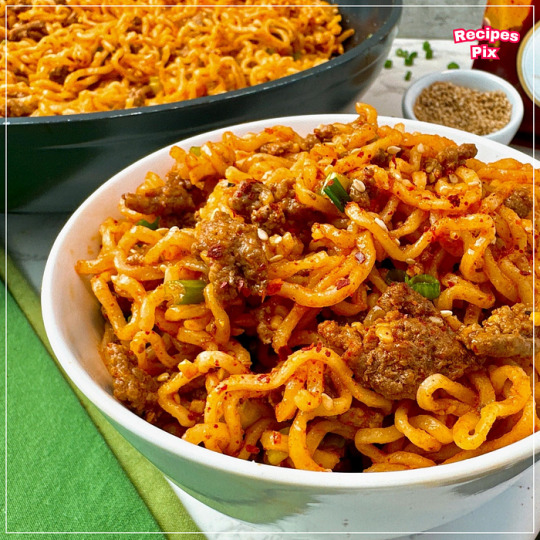
Make the Sauce Base: In a skillet, heat 1 tbsp sesame oil over medium heat. Add 3 minced garlic cloves and sauté for 1 minute until fragrant.
Add Gochujang: Stir in 2 tbsp gochujang paste and ¼ cup water. Cook for 2 minutes, stirring to blend the paste smoothly.
Create Creamy Sauce: Add ½ cup heavy cream, 2 tbsp soy sauce, and 1 tbsp honey to the skillet. Stir for 3 minutes until the sauce thickens.
Cook Veggies: Add julienned carrots and chopped spinach to the skillet. Cook for 3–4 minutes until veggies soften slightly.
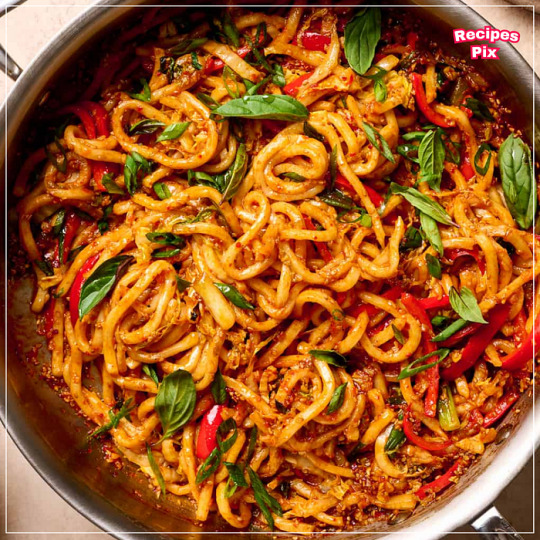
Toss Noodles: Add cooked noodles to the skillet. Toss gently to coat with the creamy gochujang sauce for 2 minutes.
Add Green Onions: Stir in ½ cup chopped green onions and ½ tsp red pepper flakes (optional) for extra spice. Cook for 1 minute.
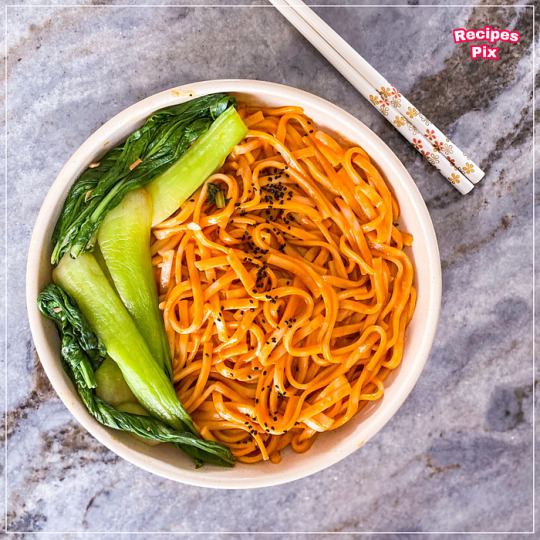
Garnish with Stencils: Sprinkle 1 tbsp sesame seeds over the noodles using heart or star stencils for a fun, pretty look.
Serve with Love: Serve the spicy gochujang noodles hot in bowls. Pair with kimchi or a fried egg for a bold creamy gochujang noodles meal.
Strawberry Rhubarb Muffins
Campbell’s Bean Casserole
Easy Simple Sloppy Joe Recipe
Cream of Broccoli Cheddar Cheese Soup
Cream of Broccoli Cheddar
Instant Pot Beets Recipes
Tips for the Best Gochujang Noodles Recipe
Fresh Gochujang: Use fresh gochujang paste for bold spicy gochujang noodles flavor.
Extra Spice: Add 1 tsp chili oil for fiery gochujang noodles nyt kick.
Creamy Texture: Use coconut cream for vegan creamy gochujang noodles.
Veggie Boost: Add mushrooms for more umami in chicken with orzo recipes.
Serve Hot: Serve right away for the best gochujang noodles recipe taste!
Recipe Decoration
Let’s make your recipe look extra yummy, friends!
Use heart or star stencils to sprinkle sesame seeds in fun patterns.
Top with extra chopped green onions for a fresh gochujang noodles look.
Serve in deep red or black bowls to highlight this creamy gochujang noodles.
Add a drizzle of sesame oil for a shiny finish.
Place a fried egg on top for a classic Korean touch. Your spicy gochujang noodles will look so good everyone will want a bowl!
Recipe Benefits
This recipe is not just tasty but also awesome, friends!
Quick Meal: Ready in 25 minutes — perfect for creamy gochujang noodles!
Kid-Friendly: Milder versions work for kids in this gochujang noodles nyt.
Bold Flavors: Spicy and creamy — great for spicy gochujang noodles lovers.
Fun Look: Sesame seed stencils make this gochujang noodles recipe a hit.
Versatile Dish: Add protein or veggies to this gochujang noodles for variety!
My Recipe Experience with Family and Friends
Hey friends, let me share how much fun I had with this gochujang noodles recipe! Last Friday, I made this for my family and friends. I invited my best friend Mia, her daughter Zoe, and my cousin Ethan over for a fun dinner. I used heart stencils to sprinkle sesame seeds, and Zoe was so excited — she said, “These noodles look like art!”
Ethan loved the spicy kick, and Mia said it was better than takeout — she asked for the recipe. Zoe ate a big bowl, saying the creamy sauce was her favorite part!
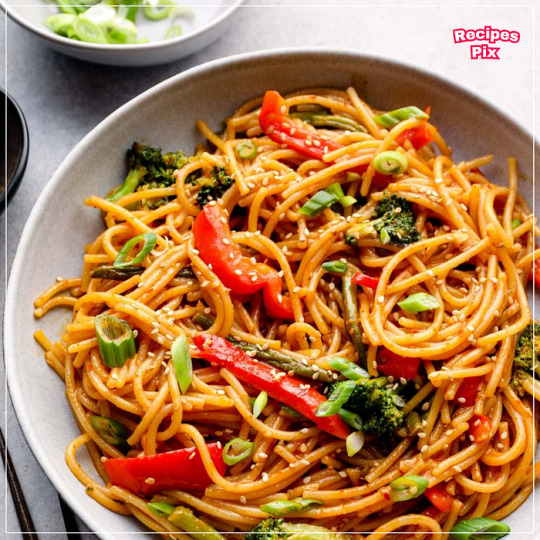
Sweet Potato Salad
GF Pancake Recipe
Banana Peach Strawberry Smoothie
Zucchini Oatmeal Chocolate Chip Cookies
Cream Creme Brulee
Carrot Cake Cookies Recipes
Conclusion
Friends, this gochujang noodles recipe is the perfect way to enjoy a spicy, creamy Korean dish that’s super easy to make! These spicy gochujang noodles have bold gochujang flavor, creamy sauce, and fun garnishes that everyone will love.
The sesame seed stencils make it a hit with kids, and the vibrant taste is great for adults. Whether for a quick dinner, lunch, or a party, this creamy gochujang noodles recipe will bring smiles to the table.
Try this gochujang noodles nyt dish and make your recipespix.com shine with these gochujang noodles! Happy cooking!
3 notes
·
View notes
Text
#i argue that the mayo provides more than butter and garlic salt. my dad argues that i was just too lazy to wash a pan.#inflicting this on you guys bc this blog has more followers#midnight speaks#random polls
14 notes
·
View notes
Text
Vezlay Soya Chaap for Gym Diet – Tasty & Nutritious
When it comes to finding the perfect balance between taste and nutrition, Vezlay Soya Chaap emerges as a game-changer, especially for fitness enthusiasts. With the rise of vegan food trends and plant-based diets, gym-goers are constantly looking for protein-rich options that don’t compromise on flavor. Vezlay Soya Chaap is a delicious, high-protein, and satisfying solution that fuels your workouts while satisfying your cravings.

Why Soya Chaap is Ideal for a Gym Diet?
Soya Chaap, a popular North Indian delicacy, is made from soy protein, making it a rich source of plant-based nutrition. For people engaged in regular workouts or bodybuilding, the demand for protein increases, and soya chaap is an excellent choice to meet this demand naturally.
Each serving of Vezlay Soya Chaap provides a substantial amount of protein, fiber, and essential amino acids, which are crucial for muscle repair, growth, and recovery after intense workouts.
Vezlay — The Name You Can Trust in Vegan Food
Vezlay has earned its name in the Vegan Food industry by delivering delicious, nutritious, and high-quality plant-based meat alternatives. Their soya chaap is hygienically processed, minimally preserved, and crafted to cater to both taste and health-conscious consumers.
What makes Vezlay Soya Chaap stand out:
Rich in Plant Protein — Perfect for gym-goers looking to build lean muscle.
Low in Fat — Supports fat-loss goals without compromising nutrition.
Quick to Prepare — Ideal for busy fitness lifestyles.
No Onion or Garlic Options Available — Suitable for people following strict satvik diets,
Nutritional Value of Vezlay Soya Chaap
This makes soya chaap a high-value addition to a gym diet. Not only does it help in muscle-building, but its vegan food profile makes it cholesterol-free, which supports heart health as well.
Best Ways to Include Vezlay Soya Chaap in Your Gym Diet
1. Grilled Soya Chaap Skewers
Marinate with olive oil, lemon juice, and herbs. Grill it and enjoy a tasty, protein-packed snack.
2. Soya Chaap Wraps
Tuck grilled soya chaap strips in a whole wheat wrap with veggies and hummus. A perfect pre or post-workout meal.
3. Soya Chaap Stir Fry
Quickly sauté with bell peppers, garlic, and soy sauce for a power meal.
4. Chaap Salad Bowl
Chop grilled soya chaap and mix with quinoa, cucumbers, cherry tomatoes, and avocado. A refreshing high-protein meal.
5. Tandoori Soya Chaap
Coat with low-fat yogurt and spices. Bake or air-fry it for a delicious tandoori treat.
Benefits of Including Soya Chaap in Your Gym Routine
Boosts Protein Intake Naturally
Promotes Lean Muscle Mass
Easy on Digestion
Satisfies Cravings Without Guilt
100% Plant-Based — aligns with ethical and sustainable eating habits
Why Gym-Goers Prefer Vegan Food Today?
The global shift towards vegan food is not just a trend — it’s a conscious choice. Fitness enthusiasts are increasingly turning to plant-based diets to enhance performance and reduce inflammation. Unlike animal protein, vegan food sources like soya chaap are rich in antioxidants and fiber, supporting faster recovery and better gut health.
Vezlay Soya Chaap — A Taste You’ll Never Compromise On
Often, fitness diets are labeled boring. But with Vezlay Soya Chaap, you’re choosing a product that is as tasty as it is healthy. Whether you are grilling, baking, or pan-frying it, the texture and taste remain authentic and meaty, making it a favorite among vegetarians and non-vegetarians alike.
Where to Buy Vezlay Soya Chaap?
Vezlay Soya Chaap is available in most major supermarkets and online stores across India. You can also find it in vegan food stores, fitness cafes, and diet meal subscription services.
Conclusion: A Must-Have for Every Gym Diet
Adding Vezlay Soya Chaap to your daily routine is a smart move for anyone serious about fitness, health, and sustainability. It not only fuels your body with the required plant protein but also satisfies your taste buds. As Vegan Products continues to revolutionize the fitness industry, soya chaap is truly the king of taste and nutrition.
2 notes
·
View notes
Text
Vegetables: Nature’s Nutritional Powerhouse

Vegetables are some of the most nutrient-rich and versatile foods on the planet. They come in various colors, flavors, and textures, making them an essential part of any balanced diet. Whether you are aiming to lose weight, boost immunity, or maintain a healthy lifestyle, adding more vegetables to your meals is a smart and effective choice.
Nutritional Benefits of Vegetables
Vegetables are packed with nutrients that support overall health. They are rich in:
Vitamins like A, C, E, and K that support eye health, skin repair, and immune function.
Minerals such as potassium, magnesium, and iron that help regulate blood pressure and support energy levels.
Fiber, which aids in digestion and promotes a feeling of fullness.
Antioxidants, which help fight inflammation and protect against diseases like cancer and heart disease.
Unlike processed foods, vegetables are naturally low in calories and free from unhealthy fats or added sugars.
Delicious Ways to Enjoy Vegetables
Vegetables can be prepared in countless ways to suit different tastes and meal plans. Here are some creative and delicious ideas:
Roasted vegetables such as carrots, broccoli, and Brussels sprouts make a perfect side dish.
Toss grilled zucchini, bell peppers, and mushrooms with pasta or rice.
Stir-fry mixed vegetables with garlic and soy sauce for a flavorful Asian-inspired meal.
Add steamed or raw vegetables to sandwiches and wraps for extra crunch and nutrition.
Enjoy a salad made with leafy greens, cherry tomatoes, cucumbers, and avocados.
For a complete and balanced meal, serve vegetables alongside grilled chicken, steak, or fish to ensure you're getting enough protein and essential nutrients.
Vegetables for Every Meal

It’s easy to include vegetables at every meal when you plan ahead:
Breakfast:
Add spinach, tomatoes, or mushrooms to scrambled eggs or omelets.
Blend kale or carrots into a morning smoothie.
Lunch:
Build a salad with mixed greens, cucumbers, and grilled chicken.
Include roasted vegetables in a whole-grain wrap or sandwich.
Dinner:
Serve steamed broccoli or sautéed green beans with steak or fish.
Make a hearty vegetable soup or stew loaded with carrots, celery, and potatoes.
Snacks:
Munch on sliced bell peppers or celery sticks with hummus.
Keep cherry tomatoes or baby carrots in the fridge for a quick snack.
Pairing Vegetables with Protein
For a satisfying and nutritious meal, pair vegetables with a healthy source of protein. A plate of roasted vegetables with grilled chicken, steak, or fish provides a perfect balance of fiber, protein, and healthy fats. This combination supports muscle health, keeps you full longer, and helps maintain energy throughout the day.
You can also use vegetables as a base for your main dish. For example, a grilled eggplant stuffed with quinoa and lean meat makes a wholesome meal.
Why Eat the Rainbow?
Eating a variety of colorful vegetables ensures you get a wide range of nutrients:
Red vegetables like tomatoes and red peppers are rich in lycopene, which supports heart health.
Orange and yellow vegetables such as carrots and squash contain beta-carotene, which is good for your eyes and skin.
Green vegetables like spinach and kale are high in folate and iron.
Purple vegetables such as eggplant and purple cabbage offer powerful antioxidants.
The more colors you include on your plate, the better the health benefits.
Conclusion
Vegetables are more than just side dishes—they are nutritional superstars that deserve a central place on your plate. Whether you enjoy them raw, steamed, roasted, or stir-fried, vegetables can enhance the flavor and health value of every meal. Pair them with grilled chicken, steak, or fish for a complete, satisfying, and wholesome diet.
Make vegetables a priority in your daily meals and enjoy the energy, vitality, and well-being they bring to your life.
5 notes
·
View notes
Text

The Healthiest and Unhealthiest Seafood Dishes You Need to Know!
Choosing seafood dishes can be tricky. This guide helps you pick the best and avoid the worst. Find out which dishes are full of omega-3s and which might add too much sodium or additives.
Whether you're cooking at home or eating out, we explain what makes some seafood healthy and others not so much. See how cooking and ingredients can turn a healthy meal into a calorie-heavy one.
delight, perfectly aligning with the article's subject and section title.
Key Takeaways
Best seafood options like grilled salmon provide heart-healthy omega-3s.
Worst seafood choices often include fried or battered varieties.
Unhealthy seafood can hide sodium or additives, reducing nutritional value.
Cooking methods like baking or steaming boost health benefits over frying.
Prioritizing low-mercury, wild-caught options keep meals nutritious and safe.
Why Your Seafood Choices Matter for Health
Choosing the right seafood is more than just about taste. It affects your health and the planet. Let's explore how seafood nutrition and ethical sourcing impact your well-being.
Nutritional Profile of Seafood
Seafood is full of essential nutrients. Fatty fish like salmon and mackerel are rich in omega-3 fatty acids. These acids are good for your heart and brain. Whitefish and shellfish offer lean protein, while oysters and clams are good sources of zinc and iron.
Omega-3s reduce inflammation linked to chronic diseases
Vitamins D and B12 support immunity and energy
Low in saturated fats compared to red meat
How Seafood Fits Into a Balanced Diet
Adding seafood to your meals can meet dietary guidelines. Aim for 2-3 servings a week. This can replace higher-fat proteins. Here's a quick guide:
Type
Omega-3 (mg/serving)
Protein (g)
Salmon
2,260
22g
Shrimp
230
24g
Sardines
1,400
21g
Pair seafood with veggies and whole grains for a balanced meal. Look for sustainable seafood labels to support health and ethics.
Environmental and Ethical Considerations
Choosing sustainable seafood helps ocean ecosystems thrive. Overfished species like bluefin tuna harm marine life. Look for MSC (Marine Stewardship Council) and ASC (Aquaculture Stewardship Council) labels for responsibly sourced seafood. Sustainable choices align seafood in diet with health and environmental goals.
The Nutritional Powerhouses: Top Healthy Seafood Dishes
Some seafood dishes are packed with nutrients. They offer great health benefits without extra calories or additives. These nutritious fish dishes are perfect for those who want to eat healthy.
Grilled wild salmon with herbs: This dish is full of omega-3 rich seafood. It has anti-inflammatory benefits and vitamin D. Cooking on a cedar plank adds flavor without oil.
Steamed mussels in broth: A low-calorie seafood choice, it's rich in lean protein and iron. Try it with garlic-lemon broth for extra vitamin C.
Baked cod with lemon-dill: This white fish is low in calories but high in protein. Season it with citrus and herbs instead of butter.
Tuna poke bowls: Sashimi-grade ahi tuna is a great source of omega-3s. Add edamame, avocado, and seaweed salad for extra fiber and minerals.

"These dishes show how seafood can be both healthy and tasty," says registered dietitian Dr. Emily Carter. "Using whole foods and simple cooking methods boosts their health benefits."
It's important to control portion sizes. Aim for 4-6 oz servings to keep protein balanced. Add sides like roasted veggies or quinoa for a complete meal. Avoid breading or creamy sauces to keep dishes light and tasty. These tips make it easy to enjoy seafood's health benefits without losing flavor.
Wild-Caught vs. Farm-Raised: Understanding the Difference
Your seafood choices affect your health and the planet. Let's explore the differences between wild-caught fish and farm-raised seafood. This will help you make better choices.
Nutritional Variations Between Wild and Farmed Fish
Wild-caught fish are often leaner and have more omega-3s because of their natural diet. Farm-raised seafood, raised in controlled environments, might have more fats from processed feeds. For instance, wild salmon has more protein per serving than farmed salmon.
However, some farms now use sustainable feeds to close this nutritional gap.
Environmental Impact Considerations
Wild-caught fishing can harm delicate species. Sustainable fishing methods protect ecosystems, but not all follow these practices. Farm-raised seafood can reduce pressure on wild stocks but may pollute waters.
Look for certifications like ASC or BAP to ensure aquaculture meets eco-standards.
Taste and Texture Differences
Wild-caught fish have firmer flesh and unique flavors from their ocean diets. Farm-raised options are softer and milder. Shrimp from farms might taste sweeter, while wild-caught shrimp have a brinier taste.
Texture differences are important in dishes like sushi or soups, where mouthfeel matters.
Both wild-caught and farm-raised seafood have their advantages and disadvantages. Choose sustainable fishing practices for wild options. For farm-raised, look for certified brands that balance nutrition and ethics.
Popular Seafood Dishes Ranked by Health Benefits
Start by looking at this seafood nutritional ranking. Choose dishes that are good for you and not too risky.

Omega-3 Rich Options
At the top, are the best fish for omega-3 like salmon (2.3g per 3-oz serving) and mackerel (1.8g). Choose baked or grilled to keep nutrients in. Sardines and herring are also good, perfect for salads or snacks.
Salmon: 2,200 mg omega-3 per serving
Mackerel: 1,800 mg
Sardines: 1,400 mg
Low-Mercury Selections
For eating often, pick low-mercury seafood like shrimp, scallops, and clams. Tilapia and catfish are also safe, with mercury under 0.1 ppm. They're great in soups or stir-fries.SeafoodMercury (ppm)Shrimp0.023Scallops0.021Clams0.012
Protein-Packed Choices
Look for high-protein seafood like grilled tuna (26g protein/serving) or shrimp stir-fry (23g). Ceviche and seafood stews also have 20-25g protein. They keep you full and give you energy.
Remember, how it's cooked matters. Grilling or steaming keeps nutrients better than frying. This guide helps you enjoy tasty food that's also good for you.
Red Flags: The Unhealthiest Seafood Preparations to Avoid
Choosing the right seafood means knowing what to steer clear of. Unhealthy seafood dishes often masquerade as favorites, but their downsides are significant. Fried fish, like battered cod or crispy shrimp baskets, is a big no-no. These dishes load up on empty calories and trans fats, losing the omega-3 benefits.
Fried Fish: Breading and deep frying increase calorie counts. Choose grilled or baked options instead.
Cream-Based Soups: New England clam chowder or seafood alfredo are high in saturated fats and sodium.
Smoked and Canned Options: Smoked salmon or canned tuna in oil are high in sodium. They're seafood to avoid for those watching sodium.
“The breading in fried seafood isn’t just crispy—it’s a calorie trap. Opt for blackened or roasted alternatives to keep nutrients intact.”
Restaurant high-sodium seafood dishes can have over 1,500mg sodium in one serving—almost the daily limit. Always check labels on prepackaged items and ask about cooking methods when eating out. Swapping creamy sauces for lemon or herbs reduces calories without sacrificing taste. Being aware is crucial: these seafood to avoid can still be enjoyed in moderation with careful choices.
How Cooking Methods Transform Your Seafood's Health Profile
Choosing the right way to cook fish and seafood can make them healthier. Cooking seafood healthily means keeping nutrients like omega-3s and vitamins. Let’s look at how different cooking methods affect nutrient preservation and flavor.

Healthiest Cooking Techniques
Steaming: Keeps moisture and nutrients in. Great for delicate fish like cod or sole.
Grilling: Use a grill basket to keep healthy oils in. Marinate with olive oil and herbs for extra taste.
Baking: Season with lemon and dill. Try salmon baked at 375°F for 15-20 minutes.
Poaching: Simmer in broth or white wine. This method adds nutrients without extra fats.
Methods to Avoid
Some cooking methods add too many calories:
Frying in oil: Adds over 100 calories per serving.
Cream-based sauces: Increase fat content by double.
Breading or deep-frying: Adds more calories than baking.
Preserving Nutrients During Cooking
Here are tips to keep nutrients in your food:
Cook at lower temps (below 375°F) to prevent omega-3 breakdown.
Use acidic ingredients like lime juice (as in ceviche) to protect vitamin C.
Reuse cooking liquids (broth or water) in soups to capture soluble vitamins.
MethodNutrient RetentionCalories AddedSteaming95%0-50Grilling85%20-70Frying50%200+
Hidden Dangers: Additives and Ingredients in Prepared Seafood Dishes
Seafood additives and hidden ingredients in fish can turn a healthy meal into a source of unwanted chemicals. Many processed seafood products use preservatives to extend shelf life or improve appearance. These choices matter for your health.
Sodium phosphates in fish fillets to retain moisture, which may strain kidney function.
Nitrites in smoked seafood that could form harmful compounds during cooking.
Artificial colors like red 3 in imitation crab, linked to allergic reactions.
AdditivePurposeHealth RisksAlternativeSodium PhosphatesMoisture retentionElectrolyte imbalanceFresh fish without additivesHigh-Fructose Corn SyrupSweetness in saucesAdded sugarsLow-sugar dipping sauces
Processed seafood risks also come from breading filled with refined carbs and hydrogenated oils in frying. Check labels for terms like "modified starch" or "partially hydrogenated oils"—these signal hidden ingredients in fish dishes. When dining out, ask servers about marinades or coatings. Opt for grilled or broiled options to avoid seafood preservatives. A simple rule: fewer ingredients on the label often mean better choices.
Stay informed to protect your health. Always read packaging and ask questions when eating out. Small steps like this help you enjoy seafood’s benefits without the hidden risks.
Seafood Dishes From Around the World: Health Heroes and Villains
Seafood traditions from around the globe bring us tasty and nutritious dishes. Let's dive into how Mediterranean, Asian, and American seafood balance flavor and health. This way, we can make better choices.
Mediterranean Seafood Traditions
Mediterranean fish dishes are all about fresh ingredients and simple flavors. Grilled octopus with olive oil and lemon is a great source of omega-3s. Spain's paella and Italy's acqua pazza also stand out for their use of herbs and light broths.
These methods help keep nutrients in the food. They support heart-healthy diets.
Asian Seafood Preparations
Healthy Asian seafood is known for its light and fresh flavors. Japanese sashimi and Vietnamese pho are great examples. They use raw fish or light broths.
But, avoid dishes with tempura batter or sugary sauces. They add empty calories. Korean kimchi stews are a good choice for flavor without too much oil.
American Seafood Favorites
American seafood culture includes classics like New England boils and Louisiana gumbo. Shrimp and corn in boils are healthy. But, fried catfish or dishes with cheese add unhealthy fats.
Opt for broiled or blackened seafood instead. They offer a protein boost without extra grease.
Enjoying Mediterranean fish dishes or healthy Asian seafood is a great way to explore global flavors. Focus on herbs, citrus, and broths. This supports international seafood health goals.
Special Dietary Concerns: Seafood for Different Health Needs
For those with seafood allergies, picking the right seafood is key. Always check for cross-reactivity risks. Opt for well-cooked dishes to reduce allergen exposure. Pregnant individuals should choose low-mercury seafood like salmon or cod. These provide omega-3s important for fetal brain development without risks.
Supporting seafood for heart health means choosing fatty fish like mackerel or sardines. Their omega-3s help lower triglycerides and reduce heart disease risks. For low-cholesterol seafood options, lean choices like cod, haddock, or shrimp are great. They fit well into heart-healthy diets when prepared without added fats.
“Omega-3 rich seafood supports cardiovascular function and prenatal development when chosen wisely.”
Heart health: Prioritize mackerel, sardines, and trout.
Pregnancy: Avoid swordfish and shark; favor salmon and pollock.
Allergies: Stick to thoroughly cooked options and consult allergists before trying new species.
Cholesterol management: Opt for baked or grilled cod, herring, or clams.
Consult healthcare providers for personalized advice. Small changes, like swapping fried calamari for grilled shrimp, can make meals safe and nourishing. Always read labels and ask about preparation methods to align choices with health goals.
Making Smart Choices: How to Order Seafood at Restaurants
Enjoying seafood at restaurants doesn’t mean you have to give up on health. Follow these steps to make smart ordering healthy seafood choices. Choose better restaurant seafood options every time.
Questions to Ask Your Server
Empower your choices with these simple questions:
“How is this fish prepared?” (Grilled or baked beats fried)
“Is this wild-caught or farm-raised?”
“Can you prepare it without added butter or salt?”
Menu Red Flags
Watch for terms like:
Crispy (fried or breaded)
Creamy (often high in saturated fats)
Au gratin (cheese-laden sauces)
These dishes often add 300+ extra calories. Opt for items labeled “grilled” or “poached” instead.
Healthier Substitutions to Request
Ask for these swaps to upgrade your meal:
Swap fries for steamed veggies or a side salad
Request sauces on the side
Choose shrimp or scallops over battered fish
At fast-casual spots, prioritize grilled salmon bowls. Even in fine dining, ask chefs to omit breading or use olive oil instead of butter.
“The menu is your roadmap—ask questions and make swaps to keep dishes light and nutritious.”
Conclusion: Balancing Enjoyment and Health in Your Seafood Choices
A balanced seafood diet doesn't mean you have to choose between taste and health. Opt for dishes like grilled mackerel or baked cod. They're full of omega-3s and are light on the preparation side. This way, you fuel your body and help the planet.
It's okay to treat yourself to dishes like crispy fish tacos or creamy bisque. Just make sure to add veggies or whole grains to keep things balanced. Asking chefs about where their seafood comes from and how it's prepared is a good start. Making small changes, like choosing broiled over fried, can make a big difference over time.
Trying new recipes or enjoying sashimi-grade tuna at a trusted sushi spot can make your choices exciting. Remember, it's about progress, not perfection. Whether you're grilling at home or dining out, make informed choices. Enjoy every bite, knowing you're taking care of your health and the oceans.
https://www.homehealthyremedy.com
FAQ
What are the healthiest types of seafood to include in my diet?
Wild-caught salmon, mackerel, sardines, and trout are top choices. They're packed with omega-3s, protein, and vitamins.
How can I tell if seafood is fresh when shopping?
Fresh seafood smells like the ocean and feels firm. Its eyes should be clear, and the skin shiny. Check the sell-by date too.
Are farm-raised seafood options healthy?
Yes, if they come from responsible farms. Look for options without harmful additives for the best health benefits.
What are some common unhealthy seafood preparations to avoid?
Steer clear of deep-fried dishes like fish and chips. They're high in unhealthy fats. Also, avoid creamy sauces and high-sodium foods like smoked fish.
How can I enjoy seafood in a healthier way at restaurants?
Choose grilled, baked, or steamed seafood. Ask about how it's prepared and request sauces on the side. Opt for dishes with fresh ingredients and minimal additives.
What seafood should I avoid during pregnancy?
Pregnant women should skip high-mercury fish like swordfish and king mackerel. Instead, go for shrimp, salmon, and tilapia. Just remember to eat in moderation.
How do cooking methods impact the healthiness of seafood dishes?
Steaming, grilling, and baking keep seafood nutritious. But deep-frying and rich sauces add unhealthy fats. Choose low-oil methods for the healthiest dishes.
Are there any hidden ingredients I should watch out for in prepared seafood dishes?
Yes! Watch for high-fructose corn syrup, sodium phosphates, and hydrogenated oils. Always read labels to avoid unwanted additives.
What are some key benefits of including seafood in my diet?
Seafood is great for your heart, brain, and joints. It's full of omega-3s, protein, and vitamins D and B12. Eating it regularly can boost your overall health.
2 notes
·
View notes
Text















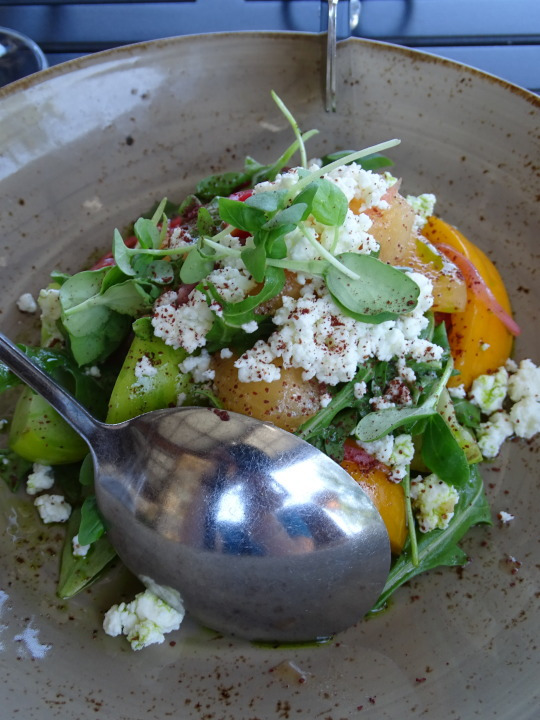
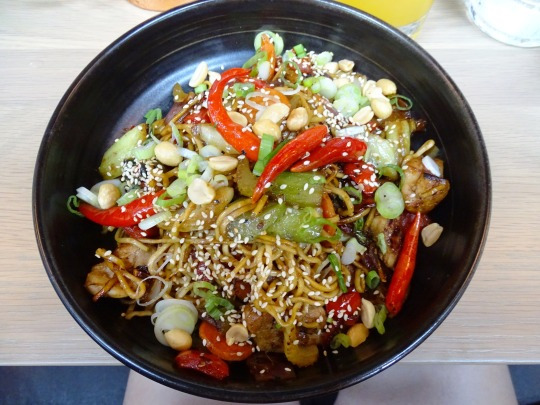
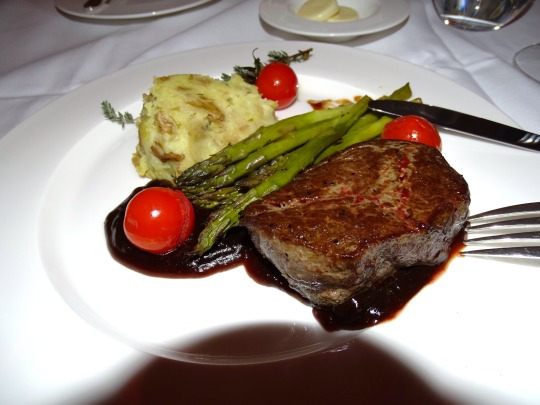


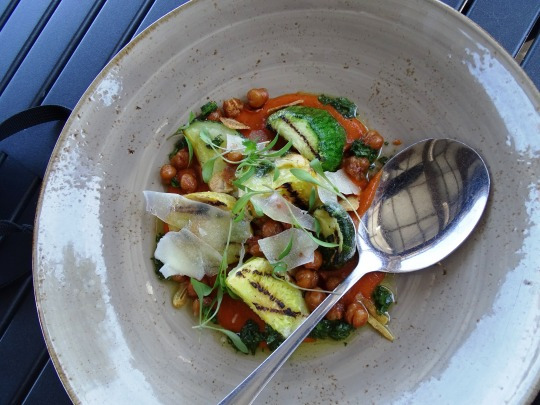
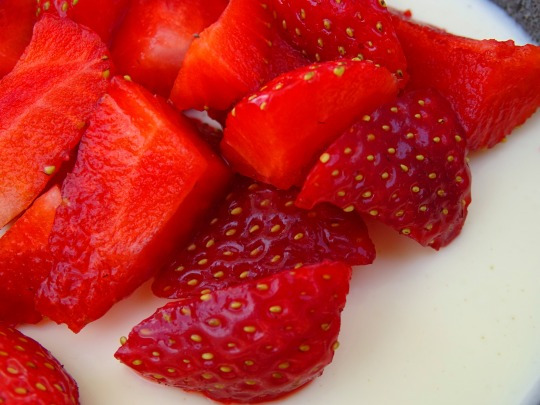
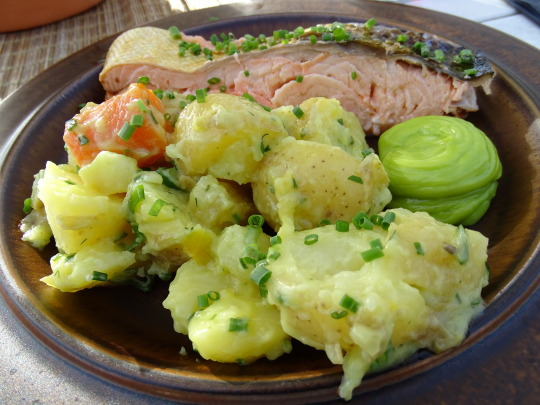

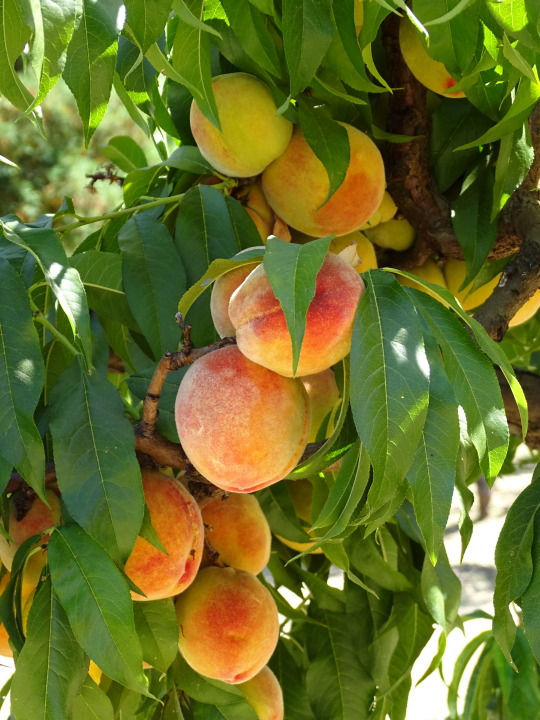
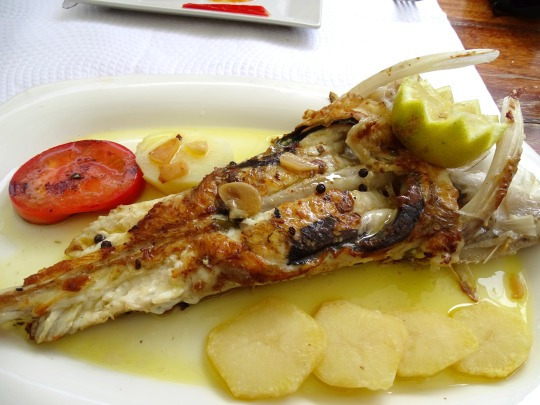




Let's All Eat Right Day
Let’s All Eat Right Day is celebrated on February 25 each year, as it marks the birthday of Adelle Davis, a famous nutritionist, author, and game-changer in the nutrition movement throughout the 1900s. So we’re here to put a face to some of the integral contributions in nutrition as a field. You have probably heard it said — “Eat breakfast like a king, lunch like a prince, and dinner like a pauper” — well, this wise adage can be credited to Davis herself.
History of Let's All Eat Right Day
As important to human beings as air and water, and in some ways one might argue that food tops the list because it can affect us in ways beyond just the physical. Food can change your mood, speak to your very soul, and make a difference in your self-perception. Thus on some level, we all want to eat right and are open to making changes that may bring us to good health. So it is only fitting that there be a day to celebrate eating right, which will hopefully put us all on a lifelong path of developing a healthier relationship with our food.
Nutrition itself has been around as long as humans have, however, it was not until 400 B.C. that the Greek physician Hippocrates observed the impact food has on physical health, especially when it came to the prevention and cure of illness. The ancient world foods used for medicinal properties (such as using garlic to cure stomach ailments) and the birth of nutritional science itself is fairly recent. It began with the discovery of vitamins, which were synthesized and their effects on disease studied. The name ‘vitamin’ is derived from the words ‘vital’ and ‘amine,’ coined by Dr. Casimir Funk in 1912. The onset of World War I caused widespread fear of food shortages and forced nutritional scientists to focus on food as a preventative for diseases. Hence the first Recommended Dietary Allowances (R.D.A.s) were issued around this time. Since then, nutritional science has been a burgeoning field of study, and none of us are untouched by it.
While it is not known when exactly Let’s All Eat Right Day was initially celebrated, we know it falls on the birthday of Adelle Davis as a way of honoring her work and the legacy she left. With bestselling books like “Let’s Eat Right to Keep Fit” (1954) and “Let’s Cook it Right” (1947), Davis’ research and publications had a huge impact on the everyday American consumer; even with her fair share of controversy. Her focus was on championing whole foods over processed foods with additives and advocating for the importance of taking nutritional supplements to help prevent disease and potentially other social ills. The early 1900s was a time when vitamins were introduced, and the concept of their value as dietary supplements was on the rise. It created a new niche in the market for health products backed by science. In October 1994 Congress approved the Dietary and Supplement Health and Education Act to regulate standards of nutritional supplements.
Let's All Eat Right Day timeline
400 B.C. Hippocrates Connects Food with Health
The Greek ‘Father of Medicine’ establishes a connection between food and its health impact.
1747 Discovery of Citrus Fruits’ Impact on Scurvy
Scottish physician Dr. James Lind finds that sailors who eat citrus fruits don’t contract scurvy.
1770 Metabolism is Discovered
‘Father of Nutrition and Chemistry,’ Antoine Lavoisier discovers the function of metabolism.
1912 The First Department of Nutrition
The University of California, Berkeley sets up the first Department of Nutrition in the U.S.
1947 Adelle Davis Becomes a Bestseller
Davis’ “Let’s…” series of books on nutrition sell over 10 million copies.
Let's All Eat Right Day FAQs
What is meant by eating right?
The official dictionary definition of the phrase ‘to eat right’ means to ‘eat healthy foods.’ However, this can vary with cultural context, dietary type, and various sociological factors like access to food. Essentially the aim of eating right is to ensure that the body receives all the nutrition it requires, in the right proportions, in order to promote good health and longevity of life.
Who is the best nutritionist in the world?
Harvard University expert, Dr. Walter Willett, is often referred to as the “most-cited nutritionist in the world,” owing to the fact that he spent around five decades researching different aspects of diet and their impact on health— more specifically, researching the cause and prevention of diseases.
What is the most perfect food?
While there is no such thing as ‘the perfect food’, there are some foods that are termed ‘nutrient-dense foods.’ They include salmon, kale, seaweed, garlic, shellfish, potatoes, liver, sardines, blueberries, egg yolk, and dark chocolate/cocoa.
Let's All Eat Right Day Activities
Check out some fresh produce
Contribute to research
Make a dietary change
Whether you have or have not always read the labels on your groceries on this day we urge you to start. Also, we encourage you to shop for an entire meal from your nearest Farmer’s Market or fresh produce center. The results will be worth the effort but don’t blame us if your chef skills aren’t up to scratch!
Let’s face it, the internet is our go-to place for researching anything and everything. It makes sense that the information on nutrition that we consume comes from legitimate research and sources. Donating to nonprofits like the Adelle Davis Foundation can help provide university grants that support various educational programs and endeavors related to nutrition.
While this may be easier said than done, the change can be a small one to begin with. And if you don’t like the word ‘diet’ because it does have ‘die’ in it, there are plenty of more pleasant options, like clean eating (for instance).
5 Facts About Healthy Eating Which May Surprise You
Low-fat products mean more sugar
Almonds are not nuts
Lemons vs. strawberries
White chocolate is a misnomer
Cabbage is mostly water
Don’t be fooled; many low-fat food options contain added sugar.
Almonds are classified as seeds and belong to the peach family.
#Fried Green Tomatos with Corn Relish#Eggplant Albondigas with tomato sauce and roasted garlic#Grilled Peaches with Balsami glazed smoked Pork Belly#BBQ Korean Bowl#Lemongrass Chicken Bowl#Brix Restaurant & Gardens#flora#Let's All Eat Right Day#Napa Valley#Yountville#California#USA#travel#summer 2024#vacation#Canada#25 February#LetsAllEatRightDay
2 notes
·
View notes
Text
Ibiharage from Burundi
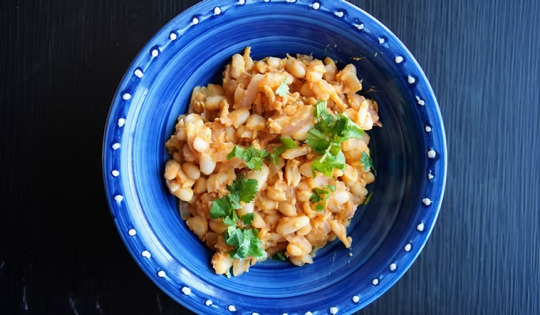
History and Origins:
Ibiharage, a traditional Burundian dish made primarily of red kidney beans, is a reflection of its agrarian roots. For centuries, beans have been a dietary staple in Burundi, thanks to its fertile soil and mild climate that support the cultivation of legumes.
The dish’s simplicity and nutritional value embody the essence of Burundian cooking, which prioritizes locally grown, affordable ingredients. Ibiharage is commonly prepared over a woodfire in rural homes and is central to communal meals and gatherings, symbolizing hospitality and togetherness. Influenced by indigenous food traditions, Arab trade routes, and European colonization, Burundian cuisine has evolved while retaining its core identity. Though deeply rooted in Burundi, ibiharage is also widely enjoyed in neighboring Rwanda, where variations like fried beans have emerged. Typically served with ugali, rice, or plantains, ibiharage remains a beloved and nourishing dish for people of all ages.

Dietary Accessibility:
This recipe is vegan, gluten-free, and halal using vegtable oil. To ensure this dish is kosher-friendly, use kosher-certified vegetable oil.
Ingredients:
2 cups kidney beans
1 large onion, chopped
1 garlic clove, minced
1 cup cooking oil (palm or vegetable oil)
Red pepper flakes to taste
Boiling water
Salt to taste
How to Prepare:
1. Boil the kidney beans in boiling water until soft. Drain and set aside.
2. In a large pan, heat the oil and sauté the onions and garlic until translucent.
3. Add the drained beans to the pan and fry for 10-15 minutes.
4. Add red pepper and salt to taste.
5. Serve warm with fried plantains or cassava as a side dish.
Credit: Irene Keliher at https://blog.remitly.com/lifestyle-culture/nationaldishes-ibiharage-burundi-national-dish/
1 note
·
View note
Text
Vegan "cheese"
1 cup raw cashews
1/4 cup nutritional yeast
1 tsp. garlic powder
1tsp onion powder
1/4 tsp. kosher salt.
Combine in a small blender or food processor. Pulse until a medium course texture is achieved. Store in an airtight container in the refrigerator.
Please visit Vibrant Vegan Value on Pinterest at the Pinterest link above and follow for more recipes and information.
13 notes
·
View notes